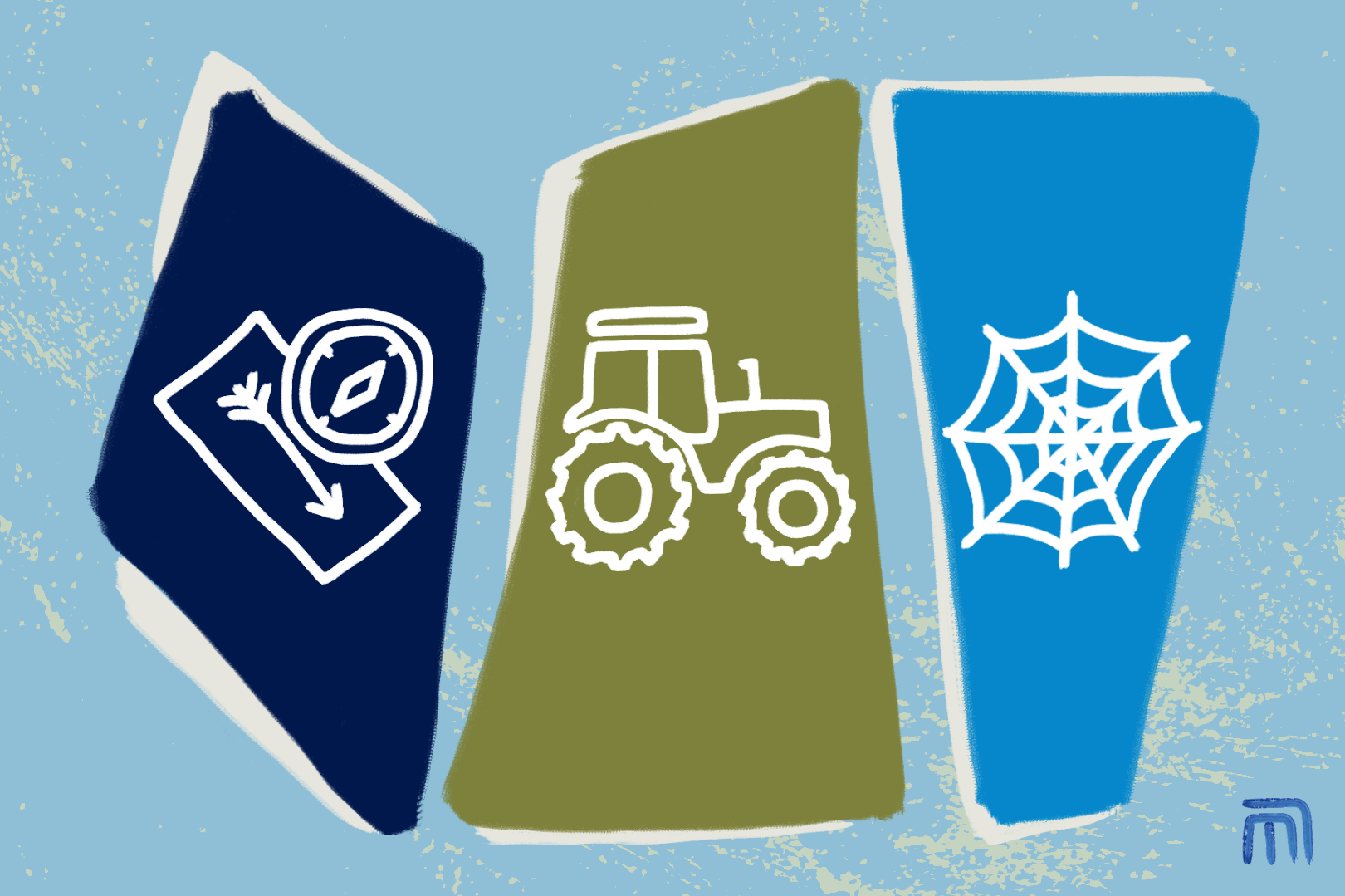By Marissa Louie · 3 min read
The act of staffing designers on projects can be difficult for managers, and unfair to designers. To ensure both project and people success when staffing projects, I've borrowed a model from the sales world: Distinguishing your team members as hunters, farmers, or trappers based on their default mode of working.
When staffing designers on projects, I aim to match a designer's archetype to the project type. I will distinguish the designer archetypes as The Hunter, The Farmer, and The Trapper, and tie them to examples from my team at Animoodles.
Most designers lean towards one of the three archetypes:

The Hunter
The Hunter: hunts for new ideas, innovation, ways to differentiate an offering, and is a blue sky and divergent thinker. Able to identify strategic areas for the team or organization.
Strongest project phase: Beginning of project (pre-launch and launch)
Example: Our story artist at Animoodles is a generative, divergent thinker who is always coming up with new and exciting ideas and strategies. He often came in at the beginning phases of projects, such as creating a new storybook, and tackling the challenge of designing our Kickstarter campaign page for the first time.

The Farmer
The Farmer: Iterates incrementally on designs to improve them over time, incorporates usability and acts on insights from analytics and customer usage, scales the impact of the feature/project.
Strongest project phase: Middle to End
Example: At Animoodles, I have been responsible for managing the design and evolution of our product line over time. This includes iterating in order to reduce the product cost while maintaining product quality, and aiming to increase the impact of Animoodles by trying to win a place in more customers' hearts. I steer which characters we release, and how the Animoodles story world evolves based on business strategy and input from our fanbase.

The Trapper
The Trapper: communicates design values, waters and grows design systems, focuses on conversion rates, builds a reputation for the design team. Designs laterally across an entire experience or organization.
Strongest project phase: Continuous through Beginning, Middle, and End
Example: My cofounder at Animoodles created the design system that unites Animoodles characters into a common look. His level of skill is world class, and attracts both customers and potential team members and business partners to Animoodles.
A caveat
Many factors go into project staffing. It's important to identify what matters most for both your team members and your organization.
In addition to designer archetypes, I heavily factor in what each designer's unique skillset is, and aim to staff designers on projects that will help them grow.
In summary...
Pairing the right project with the right designer archetype (The Hunter, The Farmer, or The Trapper) can both help ensure a greater likelihood of project success, and ensure your design team is happy, too.
Even if you're not able to match the designer archetype to the project type perfectly every time, monitor how successful you are at matching them over time. This will help ensure you set designers and projects up for overall success.
Final note: If you apply the designer archetypes of The Hunter, The Farmer, and The Trapper to project staffing, please let me know how it goes!



Marissa, this is a great way to view candidates. The simplicity of the framework helps keep it top of mind for finding the right projects and goals for the right designers.
Comments are closed.